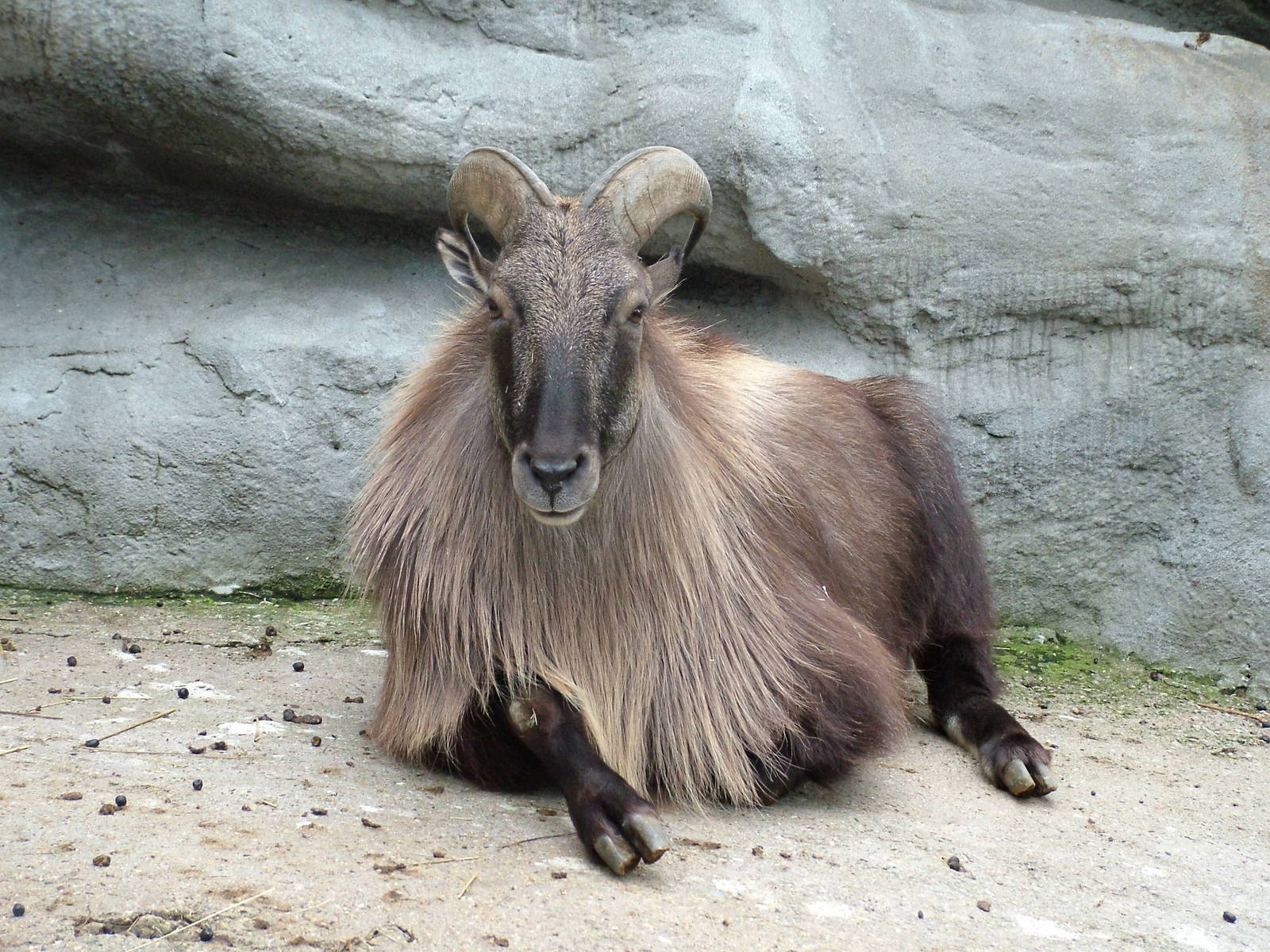
Himalayan tahr(Hemitragus jemlahicus)
Phylum —chordata
Class — mammalia
Order — artiodactyla
Family — bovidae
Genus – hemitragus
Appearance
The Himalayan tahr has a small head, small pointed ears, large eyes, and horns that vary between males and females.
Their horns reach a maximum length of 46 centimeters (18 in). Himalayan tahrs are sexually dimorphic, with females being smaller in weight and in size and having smaller horns. The horn is curved backwards, preventing injury during mating season when headbutting is a common mating ritual among males.
The average male tahr usually weighs around 73 kg (161 lb), with females averaging 36 kg (79 lb) and is shorter in height than in length.
The exterior of a tahr is well adapted to the harsh climate of the Himalayans. They sport thick, reddish wool coats and thick undercoats, indicative of the conditions of their habitat. Their coats thin with the end of winter and becomes lighter in color. This shedding is presumably an adaptation that allows their internal body temperatures to adjust to the harsh temperatures of the Himalayan Mountains.
Habitat
Its native habitat is in the rugged wooded hills and mountain slopes of the Himalaya in Nepal from Central Asia in northern Kashmir to China.
Behavior
They are most active at dusk, and during the heat of the day they usually rest in the shade of rocks or plants.
Tahrs are kept in herds of up to 20-40 heads, outside of the breeding period, males form separate groups.
Diet
The herbivorous diets of the Himalayan tahrs leave them spending most of their time grazing on grasses and browsing on leaves and some fruits.
Reproduction
Tahrs are polygynous, and males are subject to stiff competition for access to females. Young reproductive males roam and mate opportunistically (when larger males are not present), while more mature males (more than four years old) will engage in ritualistic behavior and fighting to secure mates.
Females have a gestation period of 180–242 days, usually with a litter size of only one kid. This indicates sexual selection can be extremely important to the fitness of males.
In captivity
The lifespan of a Himalayan tahr typically ranges around 14 or 15 years, with females living longer than males.
It is better to keep these animals on mountain pastures with clean water sources.
Green food is the cheapest and most complete food. It is rich in protein, vitamins, minerals and biologically active substances, and is well eaten by animals. They have green grass on pasture, but it can also be successfully used as food after mowing.
Hay is one of the main feeds in winter. It is rich in nutrients and contains a sufficient amount of vitamins E, K and group B.
 Russian
Russian
 English
English























